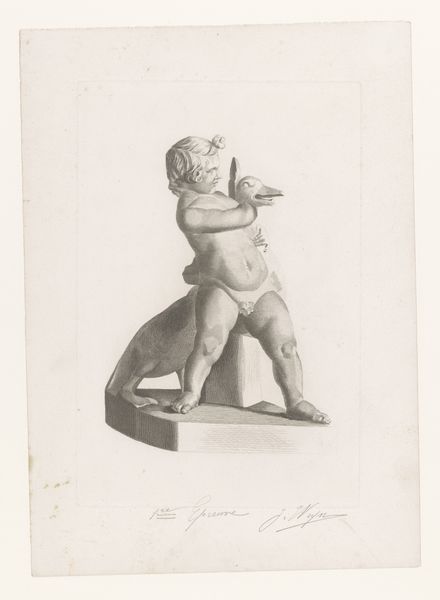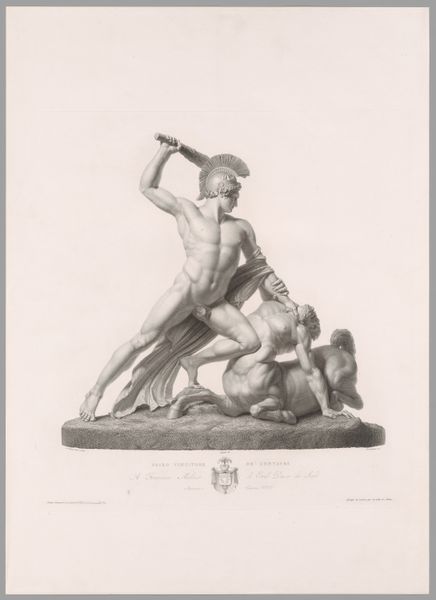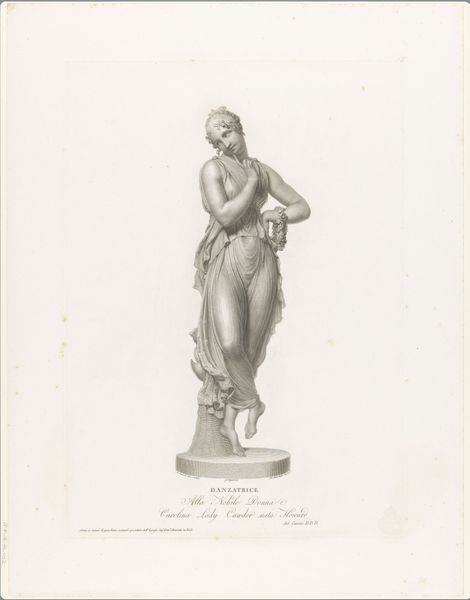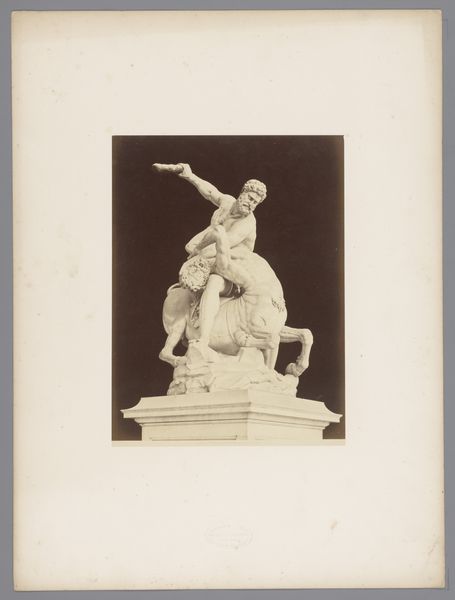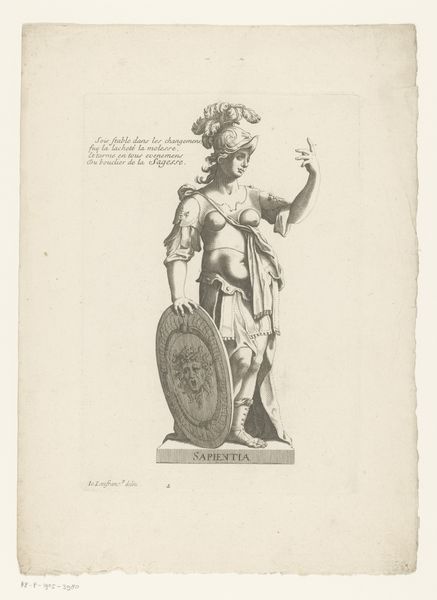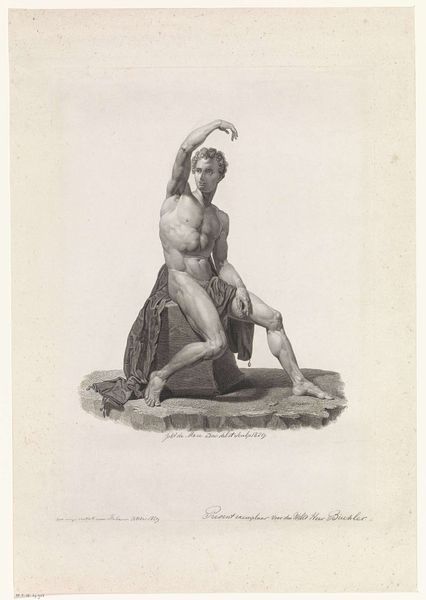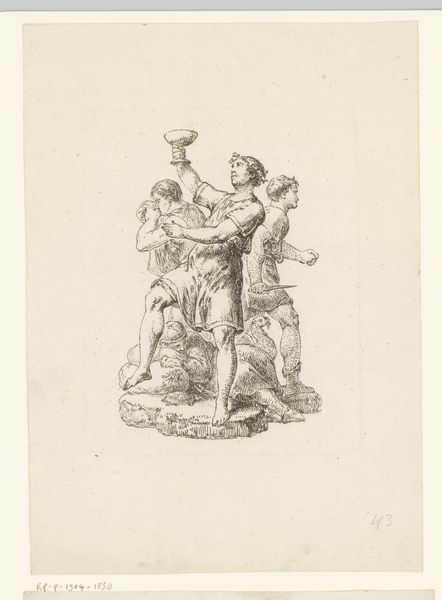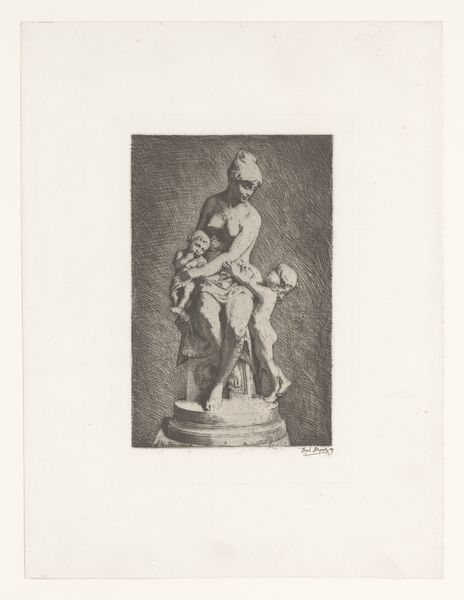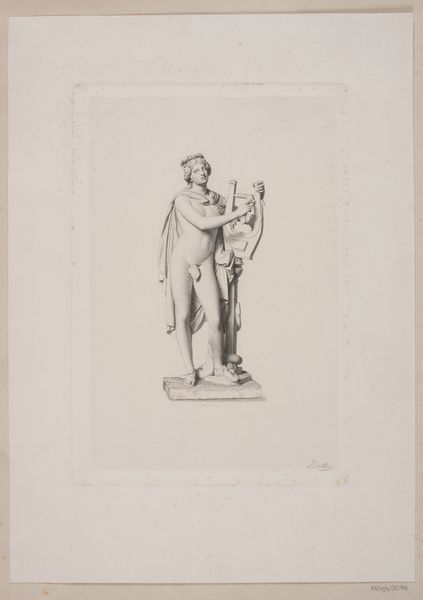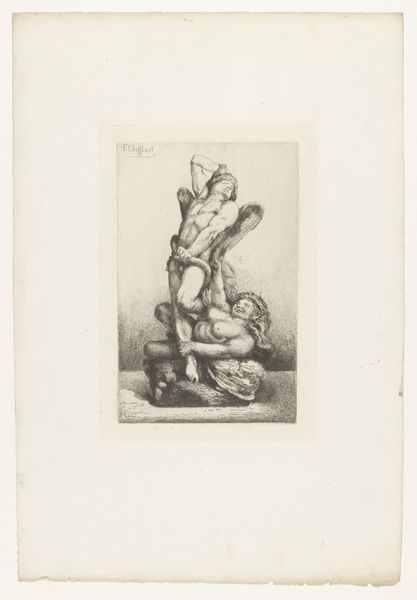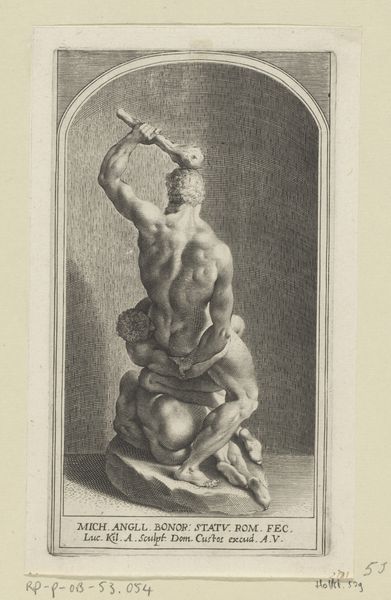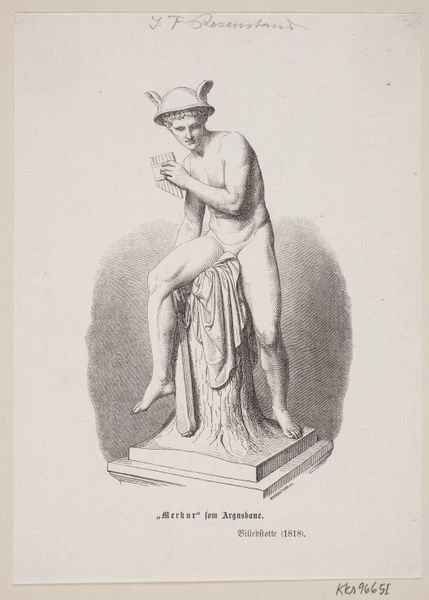
print, engraving
#
neoclacissism
# print
#
old engraving style
#
classical-realism
#
figuration
#
history-painting
#
engraving
Dimensions: height 306 mm, width 230 mm
Copyright: Rijks Museum: Open Domain
Editor: So, here we have Joseph Steinmüller's "Theseus en de centaur," an engraving that's dated somewhere between 1805 and 1841. There's something very stark and powerful in this classical scene; a clear representation of man versus beast, with all the potential violence inherent to that conflict. How do you see this piece fitting into the artistic landscape of its time? Curator: The print clearly situates itself within the Neoclassical movement, evidenced by the stark, linear style and the revival of classical subject matter. To understand its place, think about what Neoclassicism was reacting against: the extravagance and perceived decadence of the Rococo. Artists like Steinmüller turned to antiquity, seeking order, reason, and moral virtue, especially when the prints would have mass appeal due to new developments in printmaking and increased demands for visuals, like history painting or figuration of heroes. But consider the implications: what does it mean to idealize ancient Greece and Rome during a period of revolutionary upheaval in Europe? Editor: That's a great point about revolutionary upheaval. So, the image of Theseus as a champion of order, brutally overcoming the "beastly" centaur...is it a conservative statement? Curator: It could certainly be interpreted that way. The emphasis on rationality and control, embodied by Theseus, could be seen as a call for a return to traditional values amidst the chaos of the Napoleonic era. Theseus wasn't merely fighting a centaur; he was asserting dominance of "civilized" humanity. This work presents us an example of the kind of visual imagery that certain European societies valued and sought at the time, namely depictions of mythological heroism. Who commissioned this? Who paid for this violent encounter? It may tell us as much about its original viewing context as the image itself. Editor: So it's not just about aesthetic preferences but also about the socio-political implications embedded within classical narratives. Food for thought! Thanks. Curator: Exactly. It highlights how art is never created in a vacuum, but is always intertwined with social and political currents. Understanding that helps us decode the visual language of the past.
Comments
No comments
Be the first to comment and join the conversation on the ultimate creative platform.
